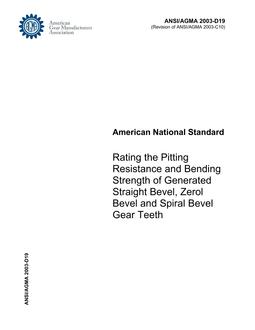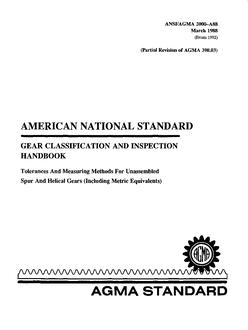-
-
Available Formats
- Availability
- Priced From ( in USD )
-
Available Formats
-
- Immediate download
- $85.00
- Add to Cart
-
- Printed Edition
- Ships in 1-2 business days
- $85.00
- Add to Cart
Customers Who Bought This Also Bought
-

AGMA 02FTM3
Priced From $47.00 -

AGMA 2003-D19
Priced From $310.00 -

AGMA 12FTM17
Priced From $47.00 -

AGMA 2000-A88
Priced From $330.00
About This Item
Full Description
A best practice in gear design is to limit the amount of backlash to a minimum value needed to accommodate manufacturing tolerances, misalignments, and deflections, in order to prevent the non-driving side of the teeth to make contact and rattle. Industry standards, such as ANSI/AGMA 2002 and DIN3967, provide reference values of minimum backlash to be used in the gear design. However, increased customers’ expectations in vehicle noise reduction have pushed backlash and allowable manufacturing tolerances to even lower limits. This is especially true in the truck market, where engines are quieter because they run at lower speeds to improve fuel economy, but they quite often run at high torsional vibration levels. Furthermore, gear and shaft arrangements in truck transmissions have become more complex, for an increased number of speeds and to improve efficiency. Determining the minimum amount of backlash is quite a challenge. This paper presents an investigation of minimum backlash values of helical gear teeth applied to a light-duty pickup truck transmission. An analytical model was developed to calculate backlash limits of each gear pair when not transmitting load, and thus susceptible to generate rattle noise, through different transmission power paths. A statistical approach (Monte Carlo) was used since a significant number of factors affect backlash, such as tooth thickness variation, center distance variation, lead, runout and pitch variations, bearing clearances, spline clearances, and shaft deflections and misalignments. Analytical results identified the critical gear pair, and power path, which was confirmed experimentally on a transmission. The approach presented in this paper can be useful to design gear pairs with a minimum amount of backlash, to prevent double flank contact and to help reduce rattle noise to lowest levels.





